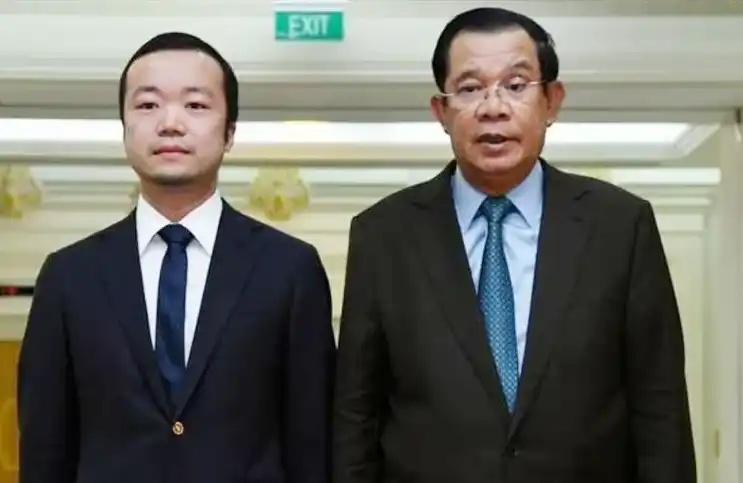10 noteworthy DAO governance experiments were reviewed
原文标题:《 盘点 10 个值得关注的 DAO 治理实验 》
原文作者:Linda Xie, Scalar Capital 联创;Derek Hsue, Blockchain Capital 前分析师
The company is DeFi The way
Introduction to the
Crypto governance has no shortage of valuable suggestions and discussions. In all categories DAO There are interesting case studies around how protocols design governance processes, as well as suggestions on DAO vendor selection, protocol economics, and more. Crypto governance mechanisms are still new and one of the most active areas of innovation. In this article, we will explore several noteworthy governance experiments and summarize the key implications of each.
Experiment of DAO governance meta design and process
对于任何想要成功并扩大规模的协议,各种利益相关者应该对协议的设计和方向有着投入。今天的大多数协议都被设计成 1 Token 1 投票,这是简单但不完整的方法。至于原因,Vitalik 很好地进行了阐述,纯粹的 Token 持有者投票系统会导致不平等、激励错位,以及通过买票进行的潜在攻击。为所有利益相关者设计可持续、可扩展的治理系统并非易事,应该有着各种方法。
Optimism Two-chamber governance system
Optimism 在 2022 年 4 月推出了 Optimism Collective,以创建一个去中心化的生态系统并尝试治理。作为背景,Optimism Collective 是一个由社区、公司和支持 Optimism 生态系统的人组成的团体,由 Optimism 基金会负责管理。虽然大多数协议治理设计在历史上只涉及 Token 治理,但 Optimism Collective 是一个两院制系统,由两院管理,即 Citizens』House 和 Token House.
Token House 对项目激励、协议升级进行投票,并管理国库基金。Token House 是由第一次 Optimism Token 空投建立的,该空投将 Token 分配给了成千上万的参与「正和的、面向社区行为「的人,如向 Gitcoin grants 进行捐赠,在 DAO 中投票。

Citizens』House 则注重于分配追溯公共产品的资金,由 Optimism 收集的收入产生。公民身份是由不可转让的 Token 授予的,并将随着时间的推移分配给越来越多的公民。这确保了 Optimism 由广泛的生态系统参与者代表(而不仅仅是 Token 持有人),且治理不会被一个财阀系统所驱动。
Element Dynamic Governance Committee
作为去中心化路线图的一部分,Element 于 2022 年 3 月推出 DAO。 Token 被分配给 Element 社区成员、Ethereum Core 开发者和 DeFi 生态系统项目。
Element 创建了一个治理指导委员会(GSC),该委员会拥有额外的治理权力和责任,由拥有至少 11 万个 Token 或 0.9% 的委托流通供应量的成员组成。成员的门槛是在连续、滚动的基础上运行的,所以 GSC 总是对收到足够授权的人开放。委员会成员在区块之间是动态的,这意味着授权的投票可以在任何时候改变,导致成员的变化。这可以使委员会成员对社区成员负责,有助于确保他们的投票符合他们的最佳利益。

总的来说,GSC 是通过允许用户选择他们认同的代表来解决治理参与不足的问题。然而,每个 GSC 成员只有一票, Token 持有人的投票可以在任何时候推翻 GSC 成员,以保持平衡,使最大的 Token 持有人没有最大的控制权。
Lido Dual governance structure
Lido's dual LDO+stETH governance structure is a new attempt to implement formal checks and balances in governance.
在 Token 投票治理系统中, Token 持有者是唯一直接参与治理的人,可以对决策产生过度影响。其他利益相关者有可能被剥夺权利,受制于 Token 持有人的一时虚妄。Lido 的双 LDO+stETH 治理结构旨在解决这些问题 -- 它允许通过 Lido 进行质押的 stETH 持有人「否决」某些治理决策。stETH 持有人可以否决的范围基于潜在攻击的下行严重性,包括像协议升级,铸币/烧毁 LDO,协议费用,以及管理节点操作员集等。
This is essentially a "check" on the governance rights of the LDO holder and ensures that multiple agreement stakeholders have direct participation in the governance process.
Dual stETH governance is not yet online, as key parameters around scope and veto rules are still under discussion. Once launched, it will be a valuable case study in how to create a governance structure that represents and allows formal participation by multiple sets of stakeholders.
ENS Metropolis pods
One of the main problems with extending DAO governance is the difficulty of keeping up with everything that is going on in the DAO. The amount of information and overhead required to vote on conventional decisions is large. Likewise, representatives do not need to be involved in all aspects of daily operations of the DAO. Delegates will not become experts on every subject, from finance to technological development to economic design, and they may not care about the highly specific details of the review. It is more efficient to set up smaller groups to focus on a specific area.
For example, ENS DAO Has been working with Metropolis (formerly known as Orca, a DAO implementation that focuses specifically on enabling small workgroups called Pods. Each pod can focus on a specific area, such as DAO operations, protocol improvement, community, and public goods.

对 pod 的访问是通过会员 NFT 授权的,可以撤销,并允许老会员轮流退出,新会员轮流加入。 Token 持有者可以将他们的投票权(甚至是特定的智能合约权限)委托给一个小组地址,但该小组内的成员可以随着时间的推移而改变。每个 pod 还可以创建子 pod,进一步委托工作。
A Secret about community-led experiments
A secret as a DAO auctions generated every day. NFT, all proceeds go into a central Treasury controlled by the NFT holder. It has a rich ecosystem of experiments funded by the protocol Treasury and stands out for the breadth of its funding initiatives. A few projects worth highlighting include Prop House, a Nouns Builder, and Agora.
Prop House is an open bounty system for the establishment and funding of new NounsDAO project proposals. While many agreements have grant programs, Prop House stands out for the scope of its funding - from large murals and consumer products, to developer tools, new front ends and MEV A robot. Nouns are notable for the vast range of things they fund, and Prop House is at the center of this dynamic.
A Secret Builder is a new tool created by Zora that allows anyone to copy auction dynamics of a secret. It is a simple codeless tool that reduces the cost of creating and extending DAOs. A Secret Builder helps proliferate daily auctions and essentially "productize" some of the key innovations that help Nouns grow in the first place. Daily auctions of Nouns are an important primitive means of increasing allocations and participation, and it is valuable to allow others to use them easily.
Agora is a licensing tool that allows Nouns holders granular control over how their governance rights are used and allocated. It has some notable features, including:
Full representation visibility: All voting records and reasons behind the vote are displayed.
流动性授权:允许 Token 持有者以模块化的方式分配他们的投票权,让某些代表对某类决定进行投票,同时将其他决定保留给单独的代表。
Delegate contest: Regular contest in which voting rights are allocated to the delegate with the most votes.

In general, Nouns represent one of the most exciting and innovative projects in encryption governance. It is likely that more bases and tools for Nouns will prolificate and affect how other protocols build and extend their governance platforms.
Noteworthy DAO governance proposals
DAO governance has no shortage of controversial, dramatic proposals. From vendor selection proposals, to protocol vision and roadmap proposals, to protocol economics, there are countless examples to look at.
ATOM 2.0
Every agreement goes on a "hero's journey" to learn what its core mission is and how to capture value along the way. Bitcoin took about a decade to decide on its vision for "" digital gold," "after considering other paths such as" "digital cash" "or" "payment networks." " Similarly, Ethereum considers a number of different paths, including "World Computer", "fundraising platform", "DeFi" and "DAO".
Cosmos No exception - it has undergone many discussions about its long-term purpose and vision. The most recent effort, the ATOM 2.0 initiative, is a collaboration between many stakeholders within the Cosmos ecosystem to create a unified vision for Cosmos Hub.
The primary purpose of the initiative is to give Cosmos Hub the means to create value for the ecosystem and capture value for ATOM holders. This is achieved through several specific concepts, including interchain security, liquidity pledge, interchain scheduler, and allocator modules. Together, these ideas allow ATOM Hub to provide security, funding, and support for other application chains. Some of the key ideas outlined in the document are planned for use by USDC, Neutron and other protocols.
然而,ATOM 2.0 提案最终没有通过,因为一些社区成员不同意该文件的所有内容,特别是围绕经济政策和 Token 分配的内容。尽管如此,关于如何更好地向前推进的讨论仍在继续,许多提出的想法也仍在进行中。总的来说,ATOM 2.0 倡议是一个有价值的案例研究,以说明协议如何凝聚在一个统一的愿景和焦点上。
Osmosis bridging selection
Osmosis bridging selection process is a unique way for DAO to select suppliers. First, as a background, Osmosis is a decentralised trading platform that provides access to all on-chain assets, starting with Cosmos. It became essential to enable Osmosis users to trade EVM assets, and doing so required integration of EVM with Cosmos bridge providers. For both user experience and engineering reasons, the community decided to choose a single standard bridge provider rather than consolidate multiple.
Selecting a single spec vendor requires vendor selection, which compares vendors in terms of user experience, safety, implementation, and reputation. Four Bridges participated in the tournament, including Axelar, Wormhole, Nomad, and Gravity. The debate over which bridge to pick is taking place on community phones, AMA, Twitter Spaces and other public Spaces.
In the end, the choice is left to the DAO itself, and the voting process takes place through a series of on-chain governance proposals. All four bridge options created proposals, and Axelar won with the most yes votes, and is currently still the model bridge for the EVM chain to Osmosis. The Osmosis bridging selection process is an interesting case study for many agreements that require collaboration with external partners.

Fei Merged with Rari DAO
Fei 和 Rari Capital 于 2021 年 12 月合并,成为迄今为止最大的 DAO 合并。两个社区都投票允许 Rari Capital 的 RGT Token转换为 Fei 的治理 Token TRIBE,比率为每 RGT 约 26.7 TRIBE。不同意合并的 Token 持有者有机会退出,这样剩余的 Token 持有者就会保持一致。虽然合并最后出现了一些问题,如涉及 Rari Capital 黑客的赔偿问题的争论,以及 Tribe DAO 本身的关闭,但这仍然是一个关于协议如何合并的有趣实验。
Uniswap expense
There has been considerable discussion about whether to turn on Uniswap's "fee switch", resulting in some fees being retained by the Uniswap agreement. Uniswap community members suggested that this fee switch be turned on as a test for 120 days in a limited number of 3 pools.
The recommendation received overwhelming support in a consensus check conducted in August 2022. Given Uniswap's important role in the DeFi ecosystem, the results of the experiment may help guide other project discussions as to whether they should vote around the agreement and whether the community can derive benefits and value added from the fees.
Gitcoin was converted from a company to a DAO
The original company that established Gitcoin, Gitcoin Holdings It is intended to further decentralize the project over time and launch the Gitcoin DAO in May 2021. In March 2022, the Gitcoin DAO passed a proposal aimed at transferring ownership of the assets of Gitcoin Holdings (domain name, code base, trademark, social media accounts) to the Gitcoin Foundation.

Gitcoin Holdings employees then submitted a proposal to Gitcoin DAO to join the DAO as an official working group. For example, the Gitcoin Product Collective team, which focuses on building key products within the ecosystem owned by Gitcoin Holdings, requested formal access to the DAO as a workflow and received funding for their work.
conclusion
在数以千计的 Token 持有者之间进行决策不是一件容易的事。加密治理仍然非常早期,在许多方面有着改进的余地,包括资源分配、制衡和权力分配。
There is no silver bullet for crypto governance, but experiments tracking the entire ecosystem can help provide some lessons for the next iteration of protocol governance. We hope that this article will provide a resource for protocol operators aiming to start, guide, and effectively run their governance processes.
Finally, thanks to Larry, Carl, Fed, Myles, Getty Hill, Jordan Clifford, Chase Chapman, Kyle Weiss, and Leighton Cusack for reviewing and providing feedback on this article.
Original link
Welcome to join the official BlockBeats community:
Telegram Subscription Group: https://t.me/theblockbeats
Telegram Discussion Group: https://t.me/BlockBeats_App
Official Twitter Account: https://twitter.com/BlockBeatsAsia


 Forum
Forum Finance
Finance
 Specials
Specials
 On-chain Eco
On-chain Eco
 Entry
Entry
 Podcasts
Podcasts
 Activities
Activities
 OPRR
OPRR








